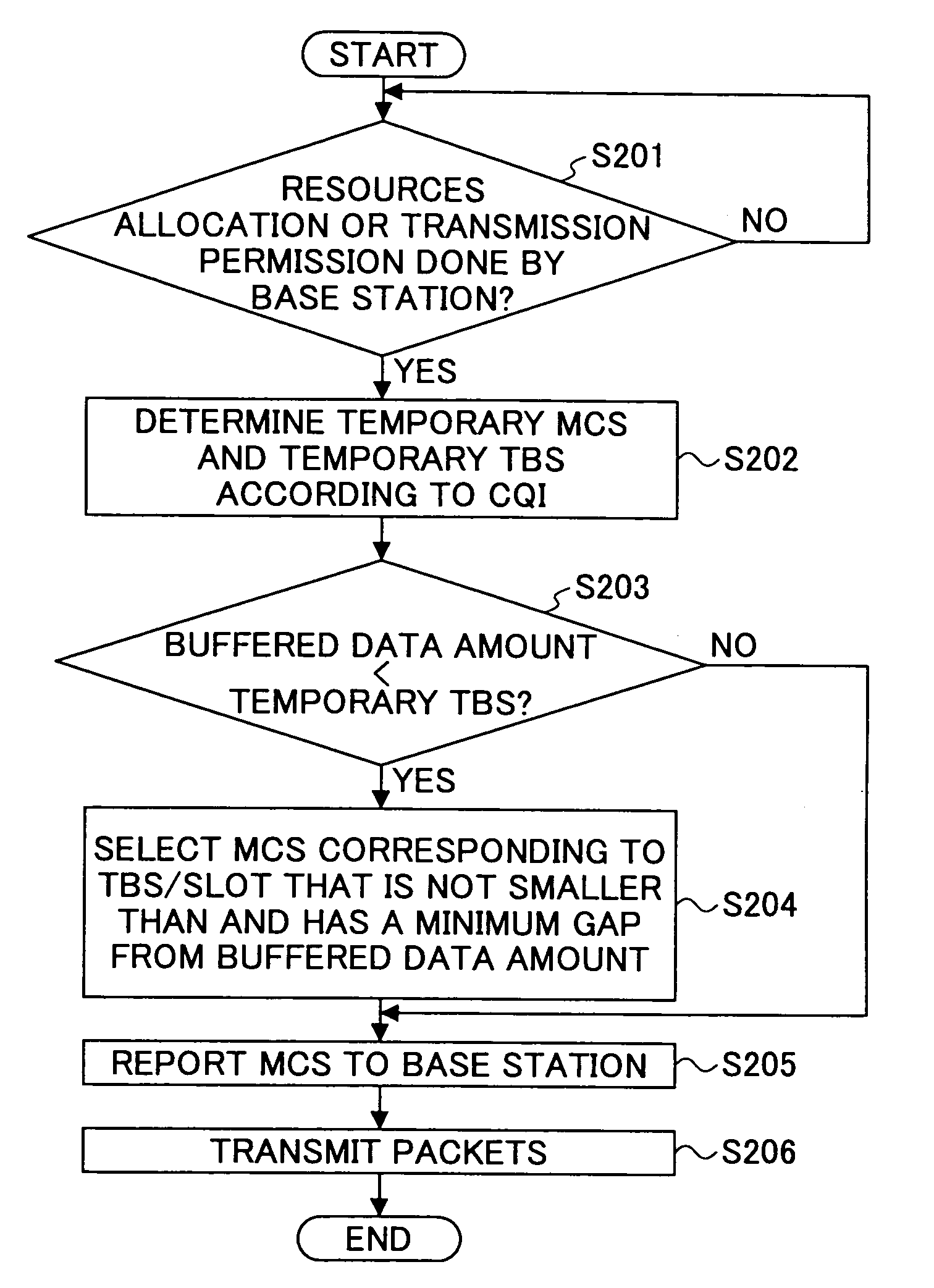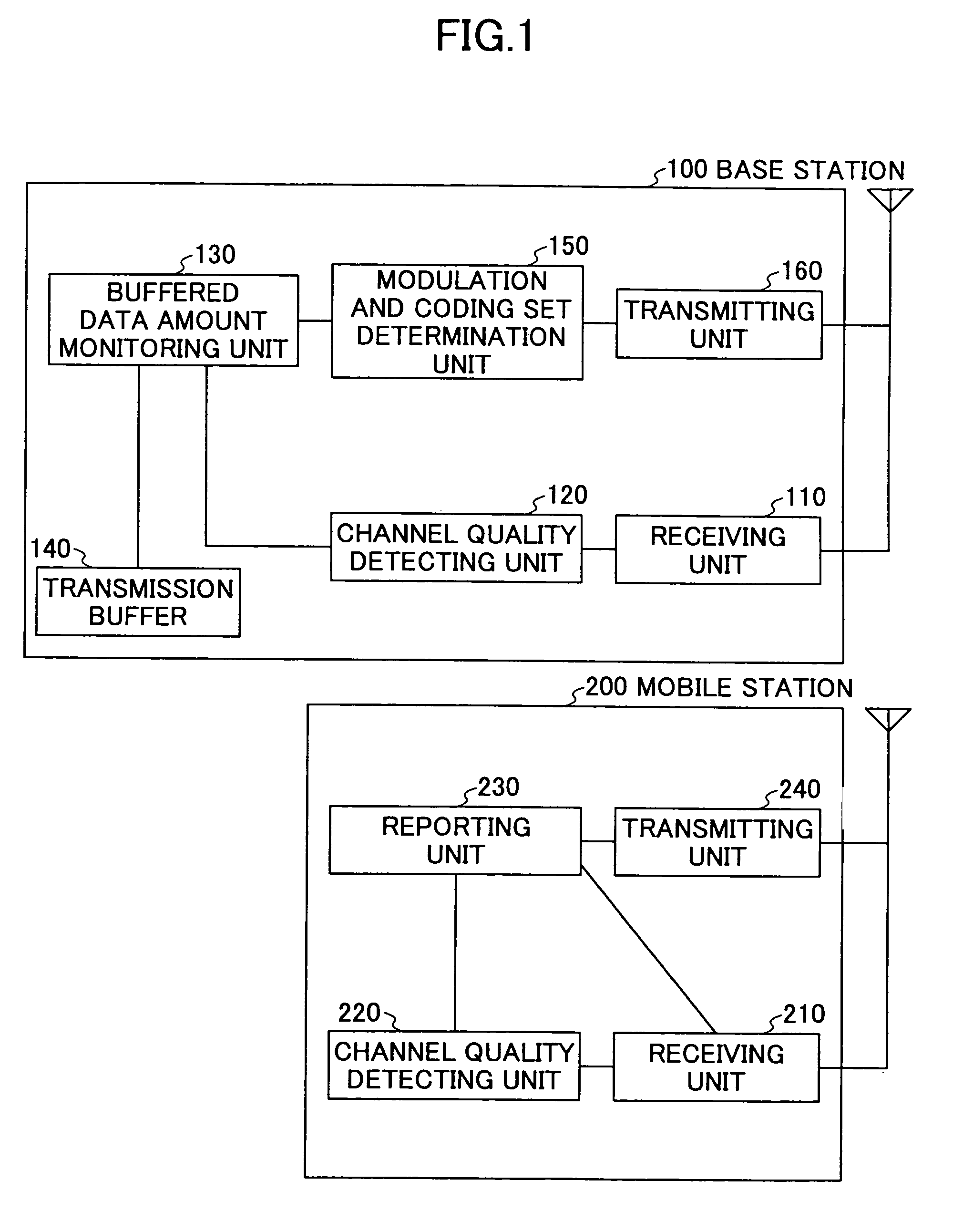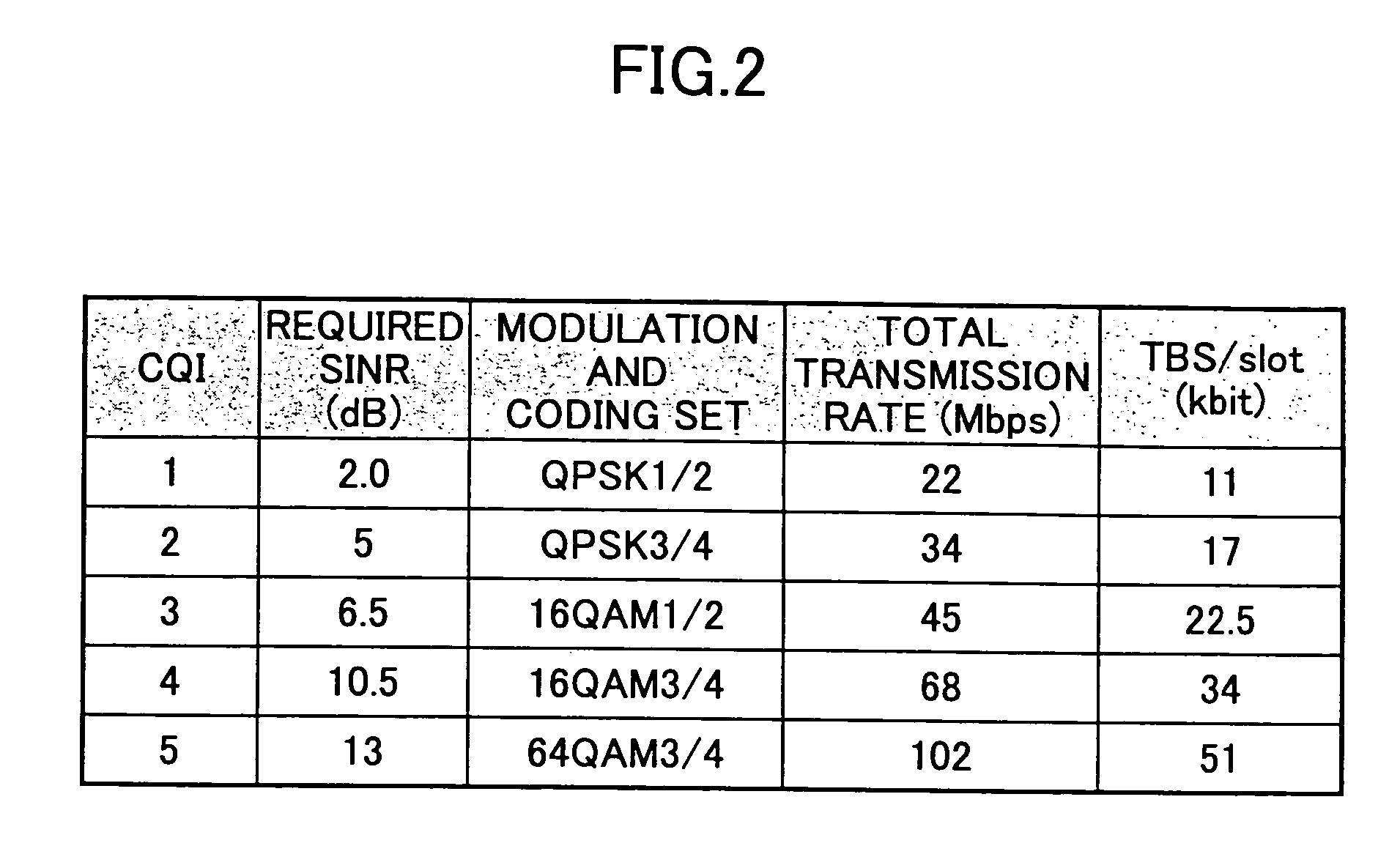Packet communications taking into account channel quality and buffered data amount
a packet communication and buffering technology, applied in the field of packet communication, can solve the problems of wasting radio resources, less likely to receive data on the receiving side, and inferior high-rate modulation and coding schem
- Summary
- Abstract
- Description
- Claims
- Application Information
AI Technical Summary
Benefits of technology
Problems solved by technology
Method used
Image
Examples
first embodiment
[0025]FIG. 1 illustrates the structures of a base station and a mobile station according to the invention. In packet transmission from the base station 100 to the mobile station 200, a modulation and coding set is determined such that a prescribed transmission condition is satisfied, and that padding, which is added to the data to be transmitted when the amount of data buffered in the transmission buffer of the base station is less than a transmission block size (TBS), becomes the minimum.
[0026]Base station 100 includes a receiving unit 110, a channel quality detecting unit 120, a buffered data amount monitoring unit 130, a transmission buffer 140, a modulation and coding set determination unit 150, and a transmitting unit 160. Mobile station 200 includes a receiving unit 210, a channel quality detecting unit 220, a reporting unit 230, and a transmitting unit 240.
[0027]The transmitting unit 160 of the base station 100 transmits a broadcast message containing identification informati...
second embodiment
[0062]FIG. 5 is a flowchart showing the operations of the mobile station 300 according to the invention.
[0063]The mobile station 300 determines whether the base station 400 has allocated resources or has given transmission permission to the mobile station 300 (step 201).
[0064]If resource allocation or transmission permission has been conducted by the base station, the mobile station 300 determines a temporary MCS and a temporary TBS that correspond to the CQI transmitted from the base station 400, based on the modulation and coding set table (S202).
[0065]Then, the mobile station 300 determines whether the buffered data amount is less than the temporary TBS (S203). If the buffered data amount is greater than or equal to the temporary TBS (NO in S203), the mobile station 300 reports the temporary MCS as the actual modulation and coding set to the base station 400 (S205). Then, having received a response indicating the receipt of the modulation and coding set (MCS) from the base statio...
PUM
 Login to View More
Login to View More Abstract
Description
Claims
Application Information
 Login to View More
Login to View More - R&D
- Intellectual Property
- Life Sciences
- Materials
- Tech Scout
- Unparalleled Data Quality
- Higher Quality Content
- 60% Fewer Hallucinations
Browse by: Latest US Patents, China's latest patents, Technical Efficacy Thesaurus, Application Domain, Technology Topic, Popular Technical Reports.
© 2025 PatSnap. All rights reserved.Legal|Privacy policy|Modern Slavery Act Transparency Statement|Sitemap|About US| Contact US: help@patsnap.com



